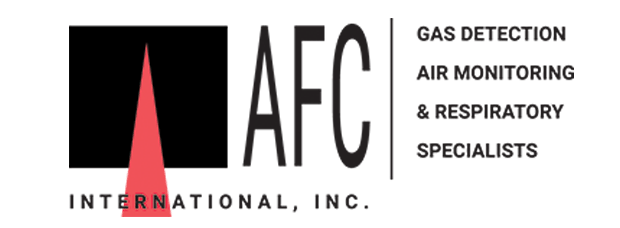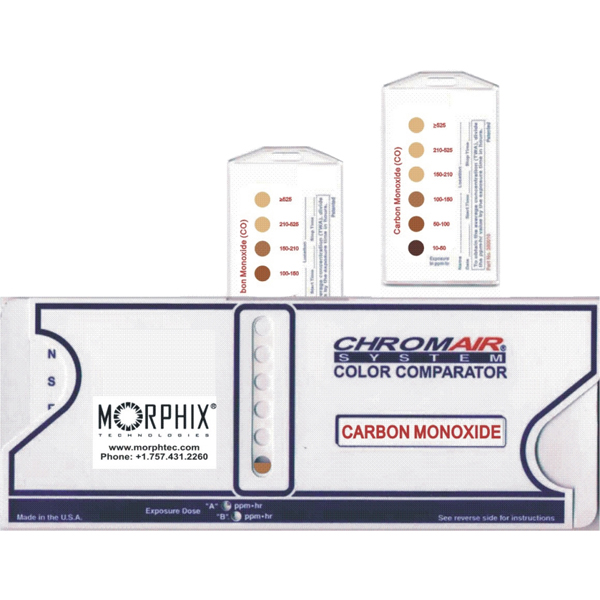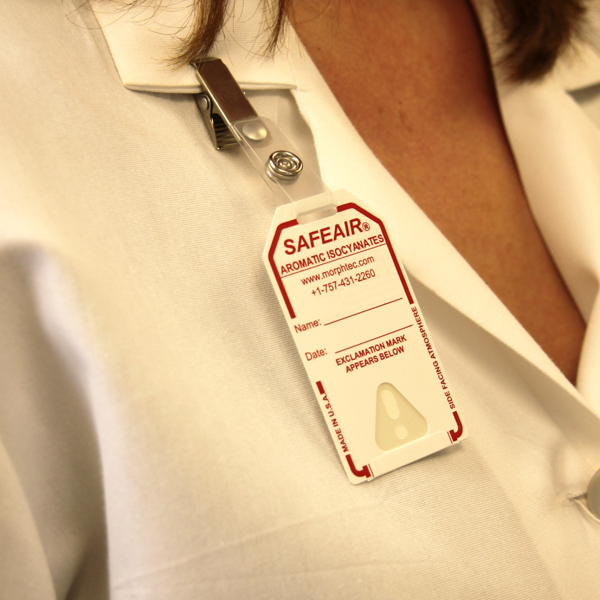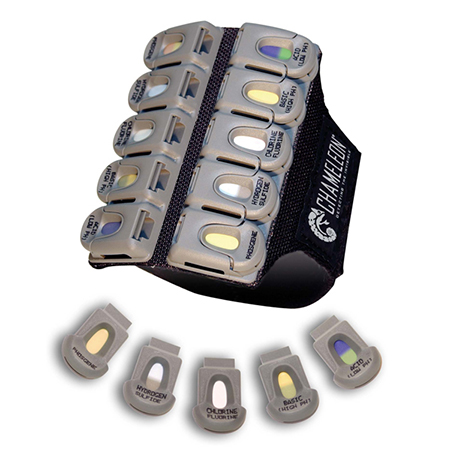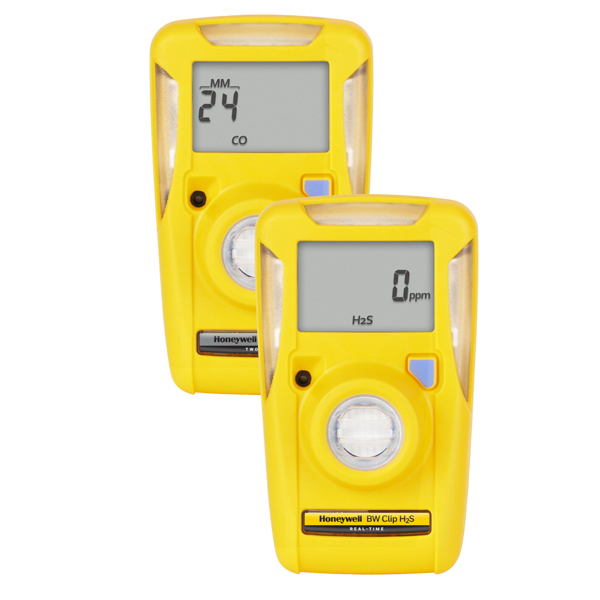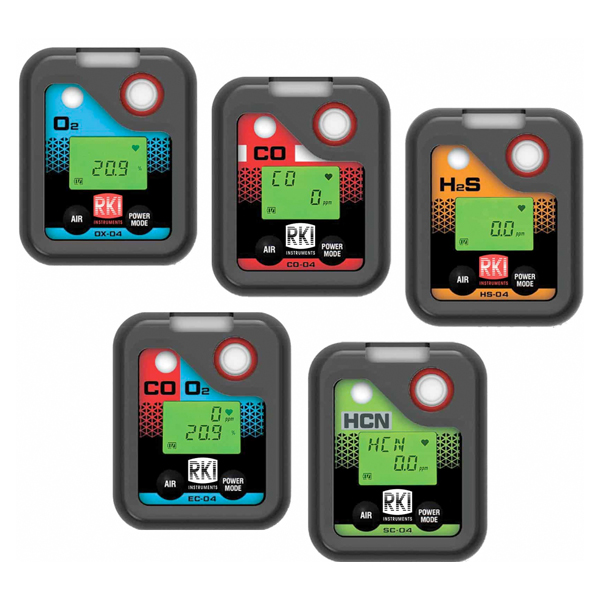Description
Description
The Carbon Monoixde Colorimetric ChromAir Badge is a patented direct-read autogenic exposimeter. The device is constructed from six cells attached on one side to a flat indicator layer and on the other side to a series of different diffusive resistances. Carbon monoxide gas diffuses to the cells through the different diffusive resistances and reacts with the indicator layer, producing color change from light brown to brown to black. The color produced on the indicator layer is a direct measure of the exposure dose. Visual color comparison is achieved by observing the formation of the brown threshold color on the individual cell and reading the corresponding exposure dose.
Carbon monoxide is a colorless, odorless gas. It is the only commonly used industrial gas which is both highly toxic and odorless. Symptoms of exposure to carbon monoxide include headaches, palpitations, dizziness, weakness and nausea. Low levels of carbon monoxide in air, which is not immediately hazardous to life, may impair reaction time or sensory perception. Chronic exposure to low levels of carbon monoxide may adversely affect the cardiovascular system. Loss of consciousness and death may result from continued or more intense exposure. OSHA PEL (permissible exposure limit) for carbon monoxide is 50 ppm (TWA). NIOSH REL (recommended exposure limit) for carbon monoxide is 35 ppm (TWA). Carbon monoxide is a widely spread air pollutant. It is a byproduct in the combustion of gasoline, diesel, kerosene and coal fuel; therefore, carbon monoxide may exist in different industries, residential areas and highways.
